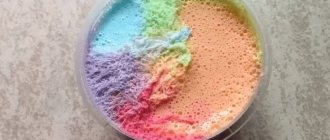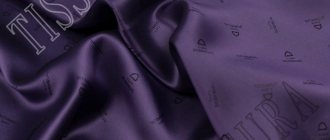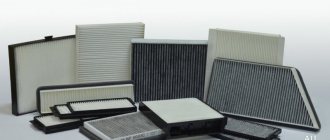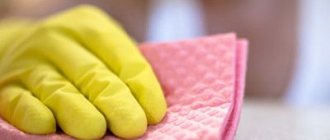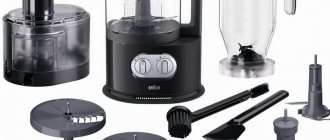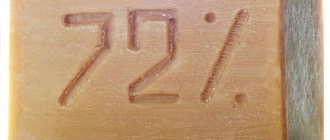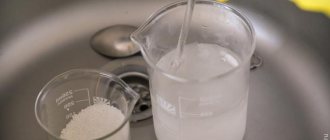An eraser is a simple item, but, as you may have guessed,
It is not that simple. Lots of details and subtleties can make or break your erasing experience (and even your paper). This is important if you are choosing an eraser for someone who is drawing. But even for a schoolchild there is a big difference; When an eraser erases well, it’s a small, but daily joy!
Iwaco erasers (Japan).
Below are factors to help you learn to keep them in mind when choosing a new eraser for yourself, for your child, for art school or regular school, for the office, or for anything else!
Choose your perfect eraser! Most likely, he will not be alone!
Washability
All erasers have the same job of erasing, but some are better at it than others. Look for an eraser that reliably removes graphite from paper with light pressure and virtually no smudging.
Form
Erasers of different shapes can be more or less effective and convenient.
Erasers come in a variety of shapes, including large and small rectangles, cylinders in pen-like holders, and even animal shapes. Rectangular erasers have better coverage and are less likely to break due to their wider shape. They are better for erasing large areas. Thinner erasers provide greater precision and control. They are better for erasing details without affecting the line around them.
Tombow Mono Smart eraser, narrow.
Consider how you plan to use the eraser and what shape will be easier for you to hold.
Doesn't ruin paper
Soft erasers will help prevent paper damage.
Some erasers are made of hard materials or include pumice as an abrasive to help remove pencil marks. They can leave scuff marks or even rub holes in the paper, especially when used with strong pressure. Look for soft erasers that won't damage the paper.
Less trash, no crumbs
Erasers whose crumbs stick together are easier to clean up.
Most erasers leave behind some kind of debris. This isn't a bad thing at all - removing dirty surfaces allows the erasers to expose fresh areas and erase more efficiently. However, piles of fine eraser dust are annoying. Look for erasers whose remains stick together into larger pieces.
Recommendations for choosing an eraser
General purpose erasers should erase cleanly, with minimal debris, avoid smearing graphite and rubbing paper.
. In addition, their shape should allow them to be easily held in the hand.
A good eraser erases effectively with surprisingly little pressure, leaves almost no streaks, and is easy to clean.
For example, the Pentel Hi-Polymer Ain eraser erases without any effort at all. No matter how lightly you touch the Pentel Hi-Polymer Ain eraser to your pencil marks, it will have some effect. Just a few passes are enough to completely remove the inscription. Pentel Hi-Polymer Eraser Ain high-polymer erasers provide ideal erasing due to the presence of a special solvent in the microcapsules. They erase not due to friction, like ordinary rubber erasers, but due to the presence of a special solvent in the microcapsules. They do not damage the paper even with repeated erasing. Ideally erases marks from stylus, barcodes, stickers.
How to remove ink marks from paper
Removing ink marks from a sheet of paper is a short but very painstaking process that requires care and attention. You can resort to the old “old-fashioned” methods and try to remove the inscription with an eraser or blade. But if such methods do not work, household chemicals, folk recipes and even cosmetics will come to the rescue.
Chemical compositions
Household chemicals can handle a fountain pen; clothing bleach with chlorine has shown the greatest effectiveness - whiteness. It is necessary to wet a cotton swab in the composition, process the ink with great care and wait about 15-20 minutes. If the marks have been removed, you need to blot the treated area with a damp cotton pad or sponge, then cover it with a clean cotton cloth and iron it with a hot iron.
Bleach should only be used to clean snow-white material. If the sheets have designs on them or have any color tint, the entire treated surface will become discolored.
Dishwashing liquid works great on ink stains. You should first apply table vinegar to the ink and wait about 10–15 minutes. Then the surface is treated with a cotton swab or disk soaked in dishwashing liquid. In this case, you should use as little product as possible to avoid damage to the paper sheet.
Hydrochloric acid in tandem with table salt will help remove pen marks from paper. It is necessary to take 9 ml and 20 g of substances, respectively, and dissolve them in 30 ml of clean water. You should apply the composition to the ink and wait until it disappears. After this, it is recommended to moisten the cleaned surface with water using a cotton pad and dry the sheet naturally, without resorting to heating or other devices.
Sodium sulfite is effective in removing pen marks. It is enough to dilute the substance in a small amount of water and treat the surface. During the cleaning process, a violent chemical reaction occurs, which releases a gas with an unpleasant odor, which destroys the ink.
Oxalic and citric acids will help get rid of ink stains without leaving streaks. Pour 5 g of each substance into a separate container and add 100-110 ml of water, mix well until the components are completely dissolved. Then you need to apply the mixture to the pen mark, wait for it to disappear and blot the treated area on the sheet with a cotton pad soaked in water. After that, you should carefully saturate the surface with a dry, clean cloth and wait for the paper to dry naturally.
Folk remedies
If you don’t have chemical compounds at hand, homemade recipes based on simple and accessible ingredients will help:
- Hydrogen peroxide. It is necessary to take a 20% solution of the substance and apply locally to the ink stain, then blot with a paper napkin or cloth. If you can’t remove the stain the first time, you should repeat all the manipulations.
- Alcohol and heated glycerin. The components must be mixed in equal proportions and applied to the ink, but it is important not to touch the part of the paper without text.
- Alcohol and soda. It is necessary to prepare a solution of 200 g of alcohol, 10 g of soda and 100 g of clean water. The product is applied to the pen stains using a cotton swab or disk; after some time, the ink will disappear.
- Salt, soda and citric acid. Dry ingredients should be mixed in equal proportions and poured onto a hard surface. The sheet of paper must be placed with the lettering down so that it comes into contact with the mixture. You need to place a piece of plastic or glass on top with a pre-cut hole the size of the trace to be removed directly above the contamination. Citric acid is buried in the hole, and it is important to do this carefully, without touching the rest of the sheet. It is advisable to use a syringe to apply the composition locally only to the ink.
- Fresh milk or curdled milk. Ink marks will disappear if you apply a dairy product to them and wait a while. It is important to carefully handle the paper only within the drawn lines, without touching the rest of the surface.
- Exposure to ultraviolet radiation. If you place a piece of paper with text in direct sunlight, it will disappear over time. In order to remove only a fragment of the inscription, the rest of it must be covered with clean paper. If there are dents left from the written letters, it is necessary to iron the sheet with a hot iron.
Cosmetics
If you don’t have household chemicals and other effective ingredients at hand, cosmetic products that are found in almost every home will help:
- Nail polish remover. A dye-free solution containing acetone should be used. You need to drop a little liquid onto the ink mark and blot it with a clean cloth or cotton pad.
- Shaving foam. You need to carefully apply a small amount of the product with a cotton swab, wait a few minutes and blot the stain with a cotton pad or sponge soaked in water. Then you should soak the remaining moisture with a dry, clean napkin and dry the paper sheet naturally. Shaving foam should be white without any coloring substances in its composition.
- Toothpaste. You cannot take gel formulations or products containing any additives. It is necessary to apply a little paste to the dirt and blot the area to be cleaned with a damp cloth to remove any remaining product. The greatest effectiveness is shown by using toothpaste together with baking soda.
- Hair fixation spray. After treating the stain with a curl fixing agent, you should wait a while until the ink disappears and blot the cleaned area with a damp, clean cloth. If necessary, you need to repeat the procedure several times.
Important! Varnish can ruin paper - destroy its structure, discolor, and leave greasy stains. Before erasing the pen, it is recommended to test the reaction to the substance on an unnecessary piece of paper.
Mechanical methods
Mechanical impact on unwanted writing also helps remove ink. The following accessories will help:
- Eraser. Such a stationery device is present in every schoolchild's pencil case. With the help of an eraser, blots, typos and errors in notebooks and diaries are corrected. However, it cannot be called an effective remedy - during the friction process, the top layer of paper is removed, and if the manipulations are carried out carelessly, a hole may form on the sheet.
- Blade. The shaving accessory has been popular for many years and does not lose its relevance. To perform the manipulations, you should take a new blade. The inscription must be slightly scratched with a corner. The fibers of the sheet will be damaged, which will become noticeable to the naked eye, so you need to press the flat side of the blade against the damaged area and run along the paper. This way you can easily cut off any protruding fibers. To completely smooth the surface, rub it with the flat side of your nail for a while. It is important to proceed with extreme caution, because if the paper sheet is significantly damaged, it will be irrevocably damaged and other methods will not help.
- Fine-grit sandpaper. It works similarly to a blade, but its use requires special skill. It is important to remove only the extra lines from the pen without affecting the rest of the text.
- Patch. You can use either adhesive tape or medical tape. It is necessary to cut out a fragment of the desired shape from the patch, press it to the area to be cleaned and separate it. The sticky base removes the top layer of the paper surface, so it is worth cutting off the element that is closest in shape to the ink stripes. It is better to glue the patch exclusively to ink, avoiding blank paper without inscriptions.
Best erasers for drawing
Artists use erasers for more than just correcting mistakes. Soft block erasers are ideal for gently removing pencil sketches and lightening tones without disturbing your work.
Kneaded erasers are essential for art because they can be squashed into the desired shape and remove graphite from paper without rubbing.
. This allows you to remove or lighten very precise areas without the risk of smudging. These erasers have a nice texture and are soft enough to be easily shaped. They tend to dry out, so store in a tightly closed container.
If you prefer a traditional block eraser, look for options from art brands (often these erasers come with the Art label). Medium hardness is equally good for removing sketches or highlighting fine detail.
Over time, the eraser may become slightly stained with graphite, but any remaining graphite will not affect erasing performance. If you want, you can clean the eraser on a fleecy surface.
How to remove gel pen marks
Traces from a gel pen can be removed in the same way as from a ballpoint pen. If none of the methods is suitable, an effective solution based on hydrogen peroxide and potassium permanganate is used. Stages of cleaning paper using this method:
We recommend:
How to remove label glue from glass
- combine equal amounts of hydrogen peroxide and potassium permanganate in powder form to form a paste;
- carefully apply the mixture with a cotton swab to the unnecessary text;
- moisten a clean cotton pad in peroxide and remove the remnants of the used product to avoid the appearance of stains from potassium permanganate.
If the inscription occupied a significant amount of space on the paper, the cleaned sheet should be covered with a pair of clean ones and passed over with a hot iron. This way the paper web will become smooth and absolutely clean.
Important! If you need to erase both a red or blue gel pen and ink of another bright color, you should first test the product on an unnecessary piece of paper. It is possible that streaks may appear and the treated sheet may turn into a paste shade.
Best erasers for colored pencils
Yes, colored pencils are erasable too!
Most colored pencils don't erase very well.
, but usually still lighten when washed. This is useful for brightening overly pigmented areas and adding highlights to designs. Some colored pencils are specially made to be erasable. Some erasers are specially made to erase colored lead. Don't expect miracles and white paper, but usually what they can do is more than enough!
Ergonomic eraser for black lead and colored pencils.
General information
How to erase a pen inscription from paper - 4 rules
- First we try, then we use. You must first test the product you are going to use on the same sheet or on its reverse side.
- Choosing a convenient tool. Depending on the size of the surface to be cleaned, you need to choose how the composition will be applied. This could be a toothpick, an important stick, a pipette, a thin watercolor brush, or a syringe.
- Accuracy. You must be very careful when carrying out this procedure. For example, you cannot use cotton wool, as its hairs will come off and smear the stain even more. The paper itself should not be rubbed too hard, as the sheet may tear.
- Compliance with safety regulations. Using flammable products to clean paper, do it away from sources of fire. When using substances hazardous to human health, the work area must be well ventilated.
REFERENCE! It is best to wear rubber gloves and safety glasses before starting work.
How to erase pen from paper
This can be done using products purchased at office supply stores:
— an eraser for automatic pens is an eraser that is specially made to get rid of ink. Often, after using this eraser, stains or even holes appear on the paper if you rub even harder.
- correction tape - a special device with which you can stick a narrow white tape on an incorrectly written sentence, word or letter.
- corrector - a white composition that can be used to cover up a mistake. You can buy this in small jars with a brush on the lid or in the shape of a handle.
After using the listed store products, traces remain on the paper. Sometimes this is acceptable if you need to correct a small error in unimportant documents or journals.
REFERENCE! If the ink needs to be removed without a trace, then you should use folk remedies.
Simply beautiful erasers (but also good ones!)
If you want more from your stationery than just functionality, adorable yet totally effective erasers are for you! We recommend Iwako - they won't let you down.
Iwako erasers come in a variety of shapes, from aquarium fish to truck shapes. Available in dozens of themed sets to delight children and adults. The designs include many different animals, food, toys and more. Most of them consist of several parts (collapsible). This is a kind of anti-stress constructor. They erase surprisingly well, but can smear the pencil.
How to remove ink from paper using pharmaceutical products
Pharmacy products are no less popular in the fight against unnecessary labels. Many of them are also at hand for every housewife, so the time spent on purchasing them is eliminated.
Potassium permangantsovka
To remove ink from paper so that not a trace remains, you need to use ordinary potassium permanganate.
- Add a few crystals of manganese to a small amount of table vinegar.
- Stir thoroughly until the potassium permanganate is completely dissolved (it is better to strain the solution).
- Soak a cotton swab in the liquid.
- Process the ink lettering.
Alcohol
Vodka or rubbing alcohol have long been used to remove ink from paper. The process looks like this:
- Take some alcohol into a pipette.
- Drop on the inscription.
- Wait until completely dry.
If the mark to be removed is small in size, then it is best to moisten a cotton swab in alcohol and use it to spot treat the surface, being careful not to fill the stain or rub it.
Hydrogen peroxide
Using peroxide, you can remove many stains, including ink blots. Using hydrogen peroxide is no different from using alcohol. The main thing is not to forget that the product can discolor the paper, so you should not use it on colored sheets.
Hydrochloric acid
You can also remove a ballpoint pen from paper using hydrochloric acid. To do this you will need:
- Soak a cotton swab in acid.
- Blot the ink.
- Wait until completely dry.
Electric erasers
Electric erasers remove lead quickly and cleanly without tiring your hand. This is a fantastic tool for those who find regular erasers ineffective or somehow always have to do a lot of erasing.
When you press a button, the tip rotates (at over 10,000 rpm for quality models) and instantly removes graphite from the paper. Amazingly fast and accurate. It hums about the same volume as an electric toothbrush, so it won't be suitable for exams or other situations where silence is needed.
The electric eraser allows you to erase graphite pencil accurately and quickly without smearing.
Is it possible to remove ink from a pen without leaving marks?
Ink stains must be removed using suitable products. Otherwise, the mark will remain on the surface, and the item will be irrevocably damaged. Before you quietly erase the pen from paper and other materials, you should pay attention to what the painted object is made of.
Alcohol, acetone, gasoline and other aggressive compounds are suitable for removing traces of ink paste, but on some surfaces they can leave streaks or disrupt the structure of the fibers. Folk recipes based on improvised means also help, but may be ineffective if there is a large area of contamination or deep penetration of ink. It is important to remember that the fresher the trace, the easier it is to eliminate it. In this case, it is recommended to first check the reaction of the material to a particular product on an invisible part of it or an unnecessary segment in order to avoid damage to the main product. In order to remove the pen from the paper without leaving marks, either using chemical compounds or traditional methods, you should never rub the sheet - the ink will be smeared on the surface and the fibers will be damaged.
Types of erasers
Rubber erasers (natural rubber)
Rubber erasers are what most people think of when they think of erasers. These classic erasers include a regular pinkish eraser. Typically made from a mixture of rubber (caoutchouc) and pumice, they tend to smudge the pencil. The pumice in the eraser can be abrasive to the paper. However, there are some rubber erasers that have an improved formula. They are more gentle and do not leave marks and do not smudge.
Material: rubber. Does not damage paper, ensures clean and accurate erasing, suitable for black lead pencils and ink, economical consumption.
If you are allergic to natural rubber latex, look for synthetic rubber erasers or choose vinyl erasers instead.
Soft vinyl (plastic) erasers
Also known as plastic, soft vinyl erasers provide easy, clean erasing as the crumbs tend to clump together. Plastic is a popular material for erasers today because it can be molded into different shapes and properties.
All vinyl erasers are made from chemical compounds called phthalates. They help make plastic flexible, but some varieties can affect health if ingested. Some people choose to avoid phthalates altogether, even if the likelihood of exposure is low. It's worth noting that products labeled phthalate-free may actually contain very low levels of phthalates, or phthalates that are not harmful.
Nags
Made from soft rubber that can be kneaded by hand. Graphite simply sticks to them, so you can use this eraser like a blotter. They get dirty quickly, but you can clean them by stretching and squeezing them like bread dough. This hides the graphite inside the eraser and reveals a new, clean surface.
The blobs may become smeared or sticky if stored in a warm place. They can also dry out if you don't close the box well. In general, this is a consumable material for every artist.
- Kneaded eraser for pastel, graphite, charcoal241
- Artistic eraser Brauberg Art “Classic”, 40x36x10 mm, super soft, color gray80
- Eraser-knead “Deli”, color: gray, 42x42x12 mm, art. EH0261097
- Eraser “Lyra”94
- Dust-Free eraser, rectangular, PVC168
- Eraser “Elephant”, 35x28x8 mm, white79
- Thermoplastic rubber eraser “Hatber. Tandem Bright", 54x14x8 mm, 1 piece22
- Eraser “Splash” (rubber)21
- Eraser “F-10”, thermoplastic rubber, 40x15x15 mm99
- Set “Erasers-puzzles. Tools"206
Pen/ink erasers
Ink is known for its durability, but ink erasers do exist. They tend to be hard and abrasive, allowing them to scrape off
ink from the surface of the paper. It's best to use them only for small errors. If you want to correct larger errors, use correction tape or liquid, or use erasable ink pens.
Tombow Mono Sand Ink Eraser.
- Ballpoint pen “Deli. Arrow", color: black, black ink, 0.7 mm, art. EQ10-BK70
- Gel pen “College”, ink color black, body black, needle point 0.6 mm, writing line 0.3 mm46
- Ballpoint pen "iZee" 0.7 mm, black ink, black122
- Ballpoint pen “Deli. Alpha", color: black, transparent, black ink, 0.7 mm, art. EQ0072083
- Automatic gel pen “Deli”, color: black, transparent, black ink, 0.5 mm, art. EQ10420107
- Ballpoint pen with cap “Bunny. Black", 0.7 mm, ink color black, art. BSBP006-02-case143
- Gel pen “Deli”, color: black, on a stand 0.7 mm, black ink, art. E6797BLACK366
- Silwerhof gel pen “No Mistakes”, erasable, 0.7 mm, black ink, with eraser, art. 016076-02176
- Automatic ballpoint pen, 0.7 mm, black body, black ink21
- Eraser for pencils and inks “Sunpearl”, 55x20x8 mm65
Removing "blots" on gloss
It is very easy to remove ink from smooth glossy paper, especially if the sheet is white.
Alcohol-containing liquid
Peculiarities. To remove ink, both medical alcohol and any alcohol-containing liquid without dyes will work.
How to act
- Moisten a cotton pad with alcohol.
- Carefully erase the inscription made with a pen from the glossy paper.
- Wipe with a dry cotton pad or napkin.
It’s even easier to remove stains using an alcohol wipe, which doctors use for disinfection.
Eraser
Peculiarities. To remove ink from glossy paper, both a fountain pen eraser and a regular pencil eraser are suitable.
How to act
- Gently erase the ink with an eraser.
- Use a dry cloth to wipe off any pellets.
Glycerol
Peculiarities. Removing pen stains from colored paper is more difficult. Another task is added - to avoid the appearance of a lightened area on the painted sheet.
How to act
- Mix ethyl alcohol and glycerin in equal volumes.
- Apply the compound only to the ink that needs to be removed.
- After the stain disappears, blot the cleaned area with a damp cotton pad.
- Dry the sheet and iron if necessary.
What can't you do?
Acetone, turpentine, and dimexide are often cited as the most effective means. Their use will not only not help get rid of pen marks, but will also leave colored stains that will completely ruin the sheet.
Household chemicals used to destroy the inscription should not contain dyes . It is better if they are white or transparent. In such a case, there is a guarantee that after removing the paste from the paper you will not have to get rid of traces of the dye contained in the active substance.
You will find many useful tips and recommendations on removing pen ink from various surfaces and objects here.
Devices for masking errors
Using a stationery proofreader, you can make unnecessary inscriptions, unwanted mistakes, clerical errors or blots invisible. This special matte white liquid is designed to cover ink. Liquid correctors, which require drying after application, are available in different forms: with a brush, with a soft applicator. They come in the form of a pen with a metal tip (works when pressed).
A proofreader is an indispensable thing for those who work with various documents, accounting reports, and magazines. After all, using other methods of removing ink marks is only possible at home. Although this matter also has its pitfalls. Thus, in official documents (for example, in a work book), it is strictly forbidden to erase, paste over, or cover up incorrect information or mistakes with a proofreader. Incorrect entries are invalidated and corrected only in accordance with legally established rules.
Roller tapes are especially popular. This is a dry corrector that hides mistakes and blots under a smooth white tape. You can immediately duplicate the desired entry on it. By the way, the correction strip is invisible on a copied or scanned sheet of paper.
Always be careful: in order not to correct mistakes, just try not to make them. But if this does happen, don’t be upset - now you know how to wipe the pen off the paper.
When the ink is colored
Colored inscriptions are displayed using the following means:
- Composition of oxalic and citric acid. The ingredients are taken 1 part at a time and diluted with 10 parts of water. The composition is applied with a thin brush along the contour of the symbols. You can immediately see how the ink discolors and the notes disappear. Thanks to the precise application of the product, it is possible to effectively remove the error and easily correct the number in the document.
- Chlorine bleach (for example, “White”). It is applied with a cotton swab dipped in the product. Press the wet area with a dry cloth to absorb moisture; if necessary, iron the top with a warm iron.
- A solution with salt. It is prepared by diluting it in 3 tbsp. l. water 2 tsp. salt and adding 10 ml of hydrochloric acid. The composition turns out to be caustic and toxic - it must be used with extreme caution. The product is applied to the problem area with a cotton swab. After the ink disappears, the processed part of the sheet is blotted with a damp sponge.
- Vinegar. It is applied to paper, and then, when the spice dissolves the ink, the wet mark is blotted with a napkin or cotton pad soaked in water.
Office work, secretarial work, study and teaching are closely related to paper and hand writing. In a hurry or by mistake, entries may need to be corrected or deleted. Ink is decolorized without harming the paper using chemical means; mechanical erasing methods are used on plain sheets. But they all require extreme caution and accuracy, so it’s worth assessing in advance whether it would be easier to simply rewrite the document or work.
Mechanical methods
Mechanical methods are quite effective in removing both ballpoint and gel pens:
Safety razor blade .
Nowadays such blades are rare. The blade must be taken by the safe edges and bent slightly so that the thinnest top layer of paper is cut off with the curved sharp edge. There are practically no marks left, but there is still a risk of cutting through the sheet by catching too much.- Sandpaper . You need to choose the finest grain size. Use circular movements with minimal pressure to erase the inscription. Upon completion, a slight trace of roughness will remain.
- The patch is one of the most effective methods. You need to choose a fabric-based patch in a roll or plate. Cut pieces of the patch that are the size of the inscription that needs to be removed. Stick it on it, roll it with your finger for better adhesion and remove it. Part of the inscription will remain on the sticky side of the patch. Repeat until it disappears completely.
- Eraser - You will need a Koh-i-Noor double-sided eraser.
One of its sides is soft, and the other has abrasive particles. The abrasive side will do a great job of removing paste from the sheet. The second way to remove it using an eraser is to trace the inscription along the contour with a simple pencil of hardness HB or TM and erase it with a regular eraser. Repeat tracing and erasing until the inscription disappears. - Wet finger - this method only works with a ballpoint pen. Wet your finger and use circular movements without pressing to erase the inscription from the paper. Despite its apparent simplicity, this method is also one of the most effective.
Abrasive methods for destroying pens are suitable for paper with a density of at least 80 g/m.
